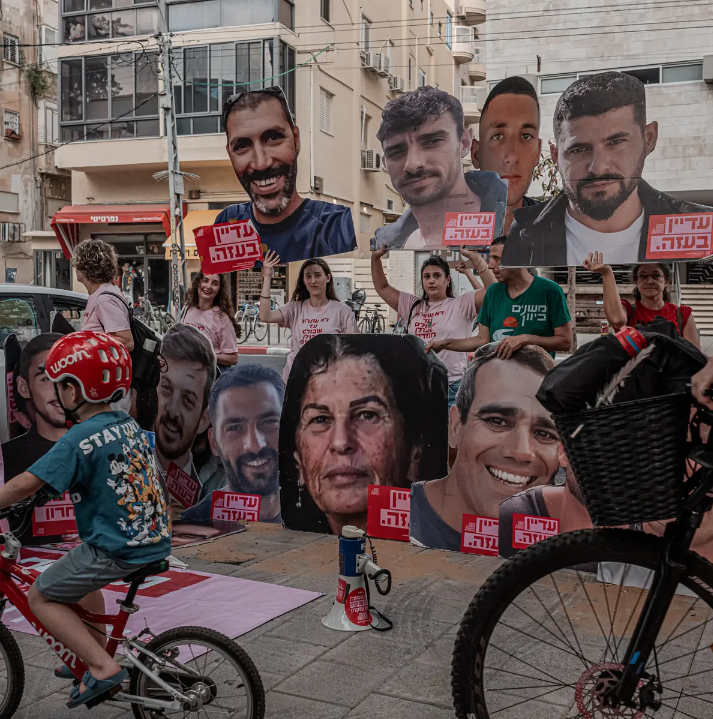
Tears in Tel Aviv: Recovery of Three Hostage Bodies Reignites Israel’s Focus on Gaza War

In a heart-wrenching turn of events that briefly overshadowed Israel’s intensifying standoff with Iran, the Israeli military has announced the recovery of the bodies of three hostages taken by Hamas during the brutal October 7, 2023, attack. The announcement, delivered early Sunday morning, sent a jolt through a nation that has, in recent weeks, been more preoccupied with escalating regional tensions than with the lingering wounds of the Gaza conflict. Yet with the names Yonatan Samerano, Ofra Keidar, and Shay Levinson now etched once more into the country’s consciousness, attention has swiftly returned to the war in Gaza and the hostages still unaccounted for.
For months, Israel’s internal landscape has been one of trauma, resilience, and grim waiting. Roughly 250 individuals were kidnapped during the Hamas-led incursion into southern Israel last October. About 50 of them are still believed to be in Gaza. Israeli intelligence now estimates that only around 20 of those hostages remain alive. The rest — like Samerano, Keidar, and Levinson — are presumed dead, their bodies having been used as tools of negotiation in a cruel and protracted conflict.
The discovery of their remains came during an ongoing Israeli military operation deep within Gaza, an offensive that has continued unabated despite the recent flare-up with Iran. While global eyes turned toward the geopolitical implications of Israel’s military exchanges with Tehran, life — or rather, the harshness of surviving it — dragged on in the besieged Gaza Strip. Over 500 more lives have reportedly been lost in Gaza in just the past week, according to health authorities in the territory. Aid trucks are still being looted. Food and water remain desperately scarce. And children, women, and men continue to sift through rubble for anything that might resemble hope.
Yet this latest recovery mission has shaken Israelis out of what many now realize was a fragile and temporary emotional diversion. It is a painful reminder that for many families, the war never left. The faces of the hostages still hang on city walls and lampposts. And for the families of those still held — or whose fates remain unknown — Sunday’s news was both a glimmer of closure and a surge of renewed fear.
Among the bodies recovered was that of Yonatan Samerano, a 21-year-old who had gone to the Tribe of Nova music festival with friends. It was meant to be a celebration of life, rhythm, and peace. Instead, it became the scene of one of the most horrifying mass attacks on civilians in Israel’s history. As the music faded into screams and chaos, Yonatan and his friends fled to the nearby kibbutz of Be’eri. But Hamas militants pursued them. Dashcam footage shows bullets riddling their car. Later, security footage confirmed what his family had long feared: his lifeless body was dragged into a van and taken across the border into Gaza.
Be’eri itself suffered catastrophic losses during that day. Around 100 people were slaughtered; at least 30 were abducted. Among them was 70-year-old Ofra Keidar, whose face has been a constant fixture at protests in Tel Aviv demanding hostage releases. She had stepped out for her morning walk when Hamas fighters entered the kibbutz. Her husband, Shmuel, was murdered inside their home. The quiet morning of a retired couple turned into a nightmare that ended in abduction and death.
Also recovered was the body of 19-year-old Shay Levinson, an Israeli tank commander. According to the military, Shay died in battle defending his unit during the October 7 assault. A dual citizen of Israel and Germany, his death reverberated beyond Israeli borders. On Sunday, Germany’s ambassador to Israel, Steffen Seibert, expressed solidarity: “Our hearts are with his family and all others waiting for their loved one’s return. There must be a deal to get them out and end this war.”
That cry — for resolution, for finality, for peace — echoes through Israel’s streets, from protest squares to Parliament halls. Earlier this year, a two-month cease-fire offered a brief window of relief. It resulted in the release of 30 hostages and the return of the bodies of eight others in exchange for the release of over 1,000 Palestinian prisoners. But that truce unraveled in March after Israel resumed its assault on Gaza. U.S. efforts under the Trump administration to reinitiate talks faltered, despite the successful return of Edan Alexander, the last known living American citizen held hostage.
The renewed trauma brought on by this latest announcement now raises urgent questions: How many more bodies lie hidden beneath Gaza’s devastated neighborhoods? How many more families will be forced to confront final truths they have long dreaded? How much longer can this cycle of death and waiting persist?
Protests reignited on Sunday in Tel Aviv and other Israeli cities. Thousands gathered again with the same posters, the same chants, the same aching pleas. There is a growing, undeniable exhaustion. The Israeli public is torn between the push for absolute military victory and the desperate desire to see the remaining hostages come home — alive or not.
Even as Israel navigates a dangerous regional chessboard with Iran, Hezbollah, and other hostile actors, the situation in Gaza is far from resolved. For many, Sunday’s revelation was not just about three bodies. It was a sharp, visceral reminder that the war has never really ended — not for the soldiers on the ground, not for the civilians in shelters, and not for the parents whose children's fates remain unknown.
Each body retrieved is a story painfully closed, a question horrifically answered. And for those still waiting, for those still hoping, the wait grows heavier, the silence louder, and the shadows of war darker.


